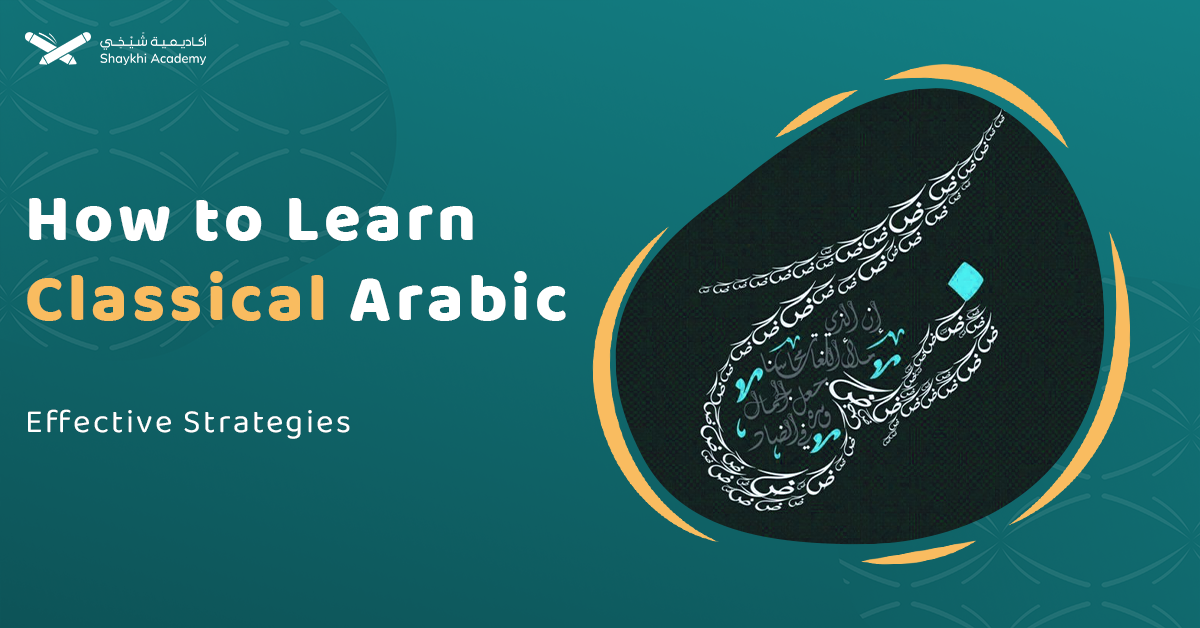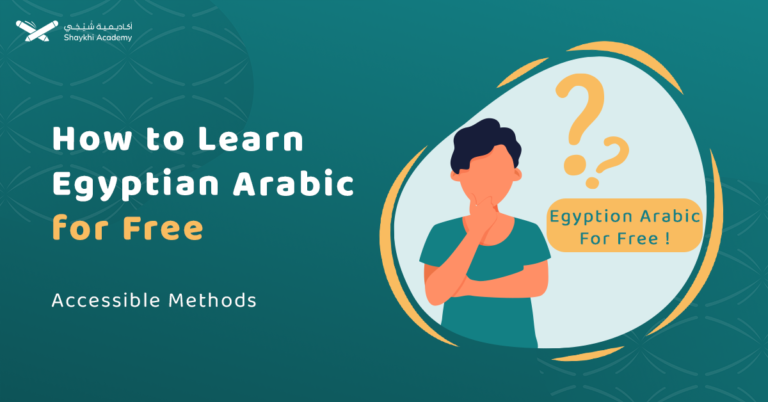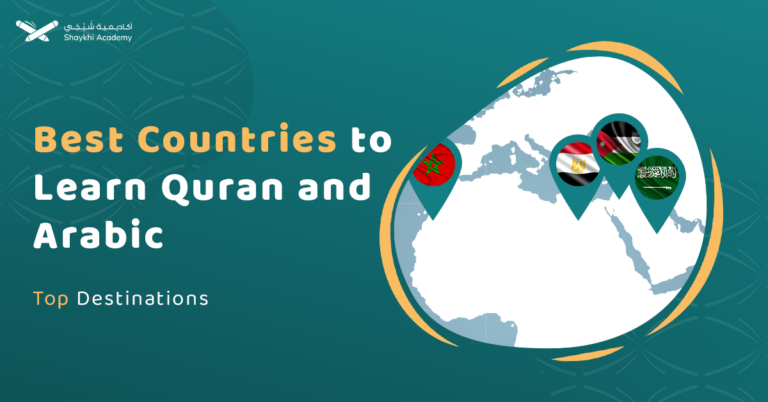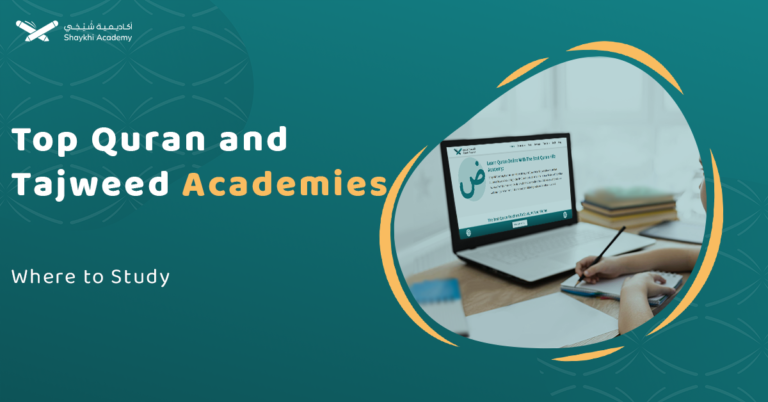Classical Arabic, the language of the Quran and a vast body of early Islamic literature, holds a special place in the hearts of millions around the world. Revered for its rich history and profound influence, Classical Arabic is more than just a language; it is a gateway to understanding the cultural, religious, and literary heritage of the Arab world.
While mastering Classical Arabic can be challenging due to its complex grammar and vocabulary, the rewards are immense. It offers not only a deeper connection to the Quran and classical texts but also a greater appreciation for the linguistic beauty that has shaped the Arabic language over centuries.
Whether you’re a beginner or someone looking to deepen your knowledge, this article will provide you with the tools and insights needed to embark on your journey of learning Classical Arabic.
What is Classical Arabic?
Classical Arabic is the standardized form of the Arabic language, historically used in literary texts from Umayyad and Abbasid times and religious texts, most notably the Quran. Emerging in the 6th century CE, it played a crucial role in unifying the Arabic language across various regions.
Despite its limited use in daily conversation, Classical Arabic continues to hold cultural and religious significance. It is studied and revered as the language of: Islamic scholarship, classical literature as well as historical documentation.
The preservation of Classical Arabic ensures the continuity of the rich linguistic and literary traditions within the Arab world.
History of Classical Arabic
Classical Arabic, which emerged within the Semitic language family, developed through the blending of languages spoken by the inhabitants of the Arabian Peninsula. The exact timing of its development remains unclear, but evidence from stone inscriptions and oral traditions suggests distinct languages existed in the southern and northern regions of the peninsula.
Traces of these languages are preserved in later Arabic dialects, especially in expressions, derivations, and synonymous terms. Al-Jahiz, in his book The Animal, notes that Classical Arabic existed approximately 150-200 years before Islam.
Old Arabic, the first recognizable form, dates back to the 4th century CE and was used in the Quran. As Islam spread, Arabic became the language of education, commerce, and governance, evolving into Classical Arabic, Modern Standard Arabic, and regional dialects.
By the 8th and 13th centuries CE, Arabic became the language of science and literature, influencing languages such as Turkish, Persian, and Urdu, and contributing to the spread of Arabic numerals and the decimal system.
Arabic, along with Hebrew, belongs to the Semitic language family and is the oldest written language, with an inscription from 328 CE mentioning an Arabic king in Nabataean Arabic. In the 1st century AH, Abu Al-Aswad Al-Du’ali introduced diacritical marks, standardizing the language and facilitating its transition from poetry to scientific writing.
Today, Modern Standard Arabic remains the preferred format for education, literature, and formal communication in 26 countries, maintaining its cultural and historical importance worldwide.
Is Classical Arabic still spoken?
While Classical Arabic is not spoken as a native language in everyday conversations, it remains a crucial part of the Islamic tradition and is still taught in schools, universities, and religious institutions across the Arab world.
Classical Arabic is used in formal settings, such as religious sermons (khutbahs), classical poetry recitations, and academic lectures on Islamic theology, history, and literature. However, for daily communication, most people in Arab countries use their local dialects.
It still plays a crucial role in some situations:
1- Religiously
As long as the Quran continues to be read, used in prayers, and studied alongside religious hadith and context, the use of classical Arabic language that will retain its identity will continue with the spread of Islam and its teachings.
2- Official reports and media
It is often clear that classical Arabic is used in official speeches, news, and official newspapers, but sometimes it can be replaced by modern Arabic to be more explicit and easy to reach meaning.
3- Literary contexts
The classical Arabic language is mainly used in Islamic literature, history, and poetry. There are many historical books and texts from which classical Arabic can be learned, which are taught largely in schools and colleges specializing in language study.
What countries use Classical Arabic?
Although Classical Arabic is not a spoken language in everyday communication, it holds a significant place in the following regions:
1. Arab Countries:
Classical Arabic is used for religious purposes and in formal speeches across all Arab countries. It is especially prevalent in mosques, religious schools, and universities.
2. Non-Arab Muslim Countries:
In countries like Indonesia, Malaysia, Pakistan, Turkey, and Iran, Classical Arabic is studied and used in religious education, particularly in the context of Quranic studies, prayers, and Islamic scholarship.
3. Islamic Educational Institutions Worldwide:
Islamic centers, mosques, and universities globally, including in Europe, the Americas, Africa, and Asia, teach Classical Arabic as part of their religious curriculum to help students understand the Quran and other religious texts.
Difference between Classical Arabic and MSA
This form of Arabic differs from Modern Standard Arabic (MSA) in terms of vocabulary, grammar, and usage, even though they share a common linguistic heritage. Classical Arabic is considered the foundation of MSA, which is used in contemporary formal communication, media, and education.
Native Arabic speakers typically do not view “Modern Standard Arabic” and “Classical Arabic” as separate languages; instead, they refer to both as “Fusha Arabic”, which translates to “the most eloquent Arabic.”
They see these forms as different historical stages of the same language. When a distinction is necessary, Modern Standard Arabic is called Fusha al-Asr , meaning “Modern Fusha” while Classical Arabic is referred to as Fusha at-Turath, meaning “Heritage Fusha”.
Classical Arabic letters and alphabet
The Arabic alphabet “Abjadiah” is the world’s second most widely used writing system after the Latin alphabet. Comprising 28 letters, each representing a consonant, Arabic is written from right to left in a cursive style. This cursive approach means that letters within a word are connected in a fluid manner, which helps to speed up writing.
Unlike the Latin alphabet, Arabic does not have uppercase or lowercase letters. However, the shape of each letter changes based on its position within a word—whether it appears at the beginning, middle, or end.
Additionally, there is a separate form for when a letter is written on its own. Diacritical marks are sometimes employed to indicate short vowels and specific grammatical endings that are otherwise unmarked. The letters ālif, wāw, and yā are used to denote the long vowels a, u, and i, respectively.
This table includes the Arabic letters, their phonetic pronunciation, and an example word with its translation. The pronunciation column provides an English approximation of the sound each letter makes.
| Letter | Name | Pronunciation | Example Word |
| أ | Alif | /a/ | أسد (Asad – Lion) |
| ب | Ba | /b/ | بيت (Bayt – House) |
| ت | Ta | /t/ | تفاح (Tuffāḥ – Apple) |
| ث | Tha | /θ/ | ثعلب (Thaʿlab – Fox) |
| ج | Jim | /ʤ/ | جمل (Jamal – Camel) |
| ح | Ha | /ħ/ | حصان (Ḥiṣān – Horse) |
| خ | Kha | /x/ | خبز (Khobz – Bread) |
| د | Dal | /d/ | دب (Dub – Bear) |
| ذ | Dhal | /ð/ | ذئب (Dhiʾb – Wolf) |
| ر | Ra | /r/ | رمان (Rummān – Pomegranate) |
| ز | Zay | /z/ | زرافة (Zarāfah – Giraffe) |
| س | Sin | /s/ | سمك (Samak – Fish) |
| ش | Shin | /ʃ/ | شجرة (Shajarah – Tree) |
| ص | Sad | /sˤ/ | صقر (Ṣaqr – Falcon) |
| ض | Dad | /dˤ/ | ضفدع (Ḍifdaʿ – Frog) |
| ط | Ta | /tˤ/ | طائر (Ṭāʾir – Bird) |
| ظ | Dha | /ðˤ/ | ظهر (Ẓuhr – Back) |
| ع | Ain | /ʕ/ | علم (ʿIlm – Knowledge) |
| غ | Ghain | /ɣ/ | غزال (Ghazāl – Deer) |
| ف | Fa | /f/ | فاكهة (Fākihah – Fruit) |
| ق | Qaf | /q/ | قمر (Qamar – Moon) |
| ك | Kaf | /k/ | كتاب (Kitāb – Book) |
| ل | Lam | /l/ | ليمون (Laymūn – Lemon) |
| م | Mim | /m/ | ماء (Māʾ – Water) |
| ن | Nun | /n/ | نمر (Nimr – Tiger) |
| ه | Ha | /h/ | هدية (Hadiyyah – Gift) |
| و | Waw | /w/ | ورد (Ward – Rose) |
| ي | Ya | /j/ | يد (Yad – Hand) |
Most Used Classical Arabic Words
Since it was mentioned that the classical Arabic language can be learned mainly through the Quran and Islamic texts, that is why the most famous words and the most used can be known from the Quran and related to religion.
This classic Arabic language is characterized by unique vocabulary and expressions, which are still used in modern Arabic and classical, and among these are some commonly used words:
| Arabic Word | Transliteration | Meaning |
| الله | Allāh | God (The Almighty) |
| القرآن | Al-Qurān | The Quran |
| سلام | Salām | Peace |
| جنة | Jannah | Paradise (Heaven) |
| نار | Nār | Hell |
| رحمن | Raḥmān | The Most Merciful |
| رحيم | Raḥim | The most compassionate |
| نبي | Nabi | The Prophet |
| صوم | Ṣawm | Fasting |
| صلاة | salah | Prayer |
| دنيا | Dunyā | The World |
| آخرة | Ākhirah | The Hereafter |
| خير | khayr | best |
| مسلم | Muslim | Muslim |
| إيمان | Iman | Faith |
| توبة | Tawbah | Repentance |
The most used Classical Arabic Phrases
Despite the fact that Classical Arabic is no longer commonly used today, having been largely replaced by Modern Standard Arabic and various dialects, there are still some traditional words that remain widely used in the present day, including:
بسم الله الرحمن الرحيم .1 (Bismillah al-Rahman al-Rahim):
“In the name of Allah, the Most Gracious, the Most Merciful.” This phrase is used at the beginning of almost every chapter in the Quran and is common in Islamic prayers and everyday speech.
الحمد لله رب العالمين .2 (Al-Hamdu lillah Rabb al-‘Alamin):
“All praise is due to Allah, Lord of the worlds.” This phrase is the opening line of the Quran and is used in various religious contexts.
إنا لله وإنا إليه راجعون .3 (Inna lillahi wa inna ilayhi raji’un):
“Indeed, we belong to Allah and indeed, to Him we will return.” This is often said in times of grief or loss.
سبحان الله .4 (Subhanallah):
“Glory be to Allah.” This phrase is used to express praise and reverence for Allah.
ما شاء الله .5 (Masha’ Allah):
“As Allah wills.” It is used to express appreciation or admiration for something, acknowledging that it is by the will of Allah.
لا إله إلا الله محمد رسول الله .6 (La ilaha illallah Muhammadur rasulullah):
“There is no deity but Allah, and Muhammad is the Messenger of Allah.” This is the Shahada, the Islamic declaration of faith.
أستغفر الله .7 (Astaghfirullah):
“I seek forgiveness from Allah.” It is commonly used to ask for forgiveness or express regret.
السلام عليكم ورحمة الله وبركاته .8 (As-Salamu Alaikum wa Rahmatullahi wa Barakatuh):
“Peace be upon you, and the mercy of Allah and His blessings.” This greeting is used in various social and religious contexts.
These phrases reflect the depth and spirituality of Classical Arabic and are integral to various aspects of Islamic worship and everyday communication
What are the top grammar rules in Classical Arabic?
Arabic grammar, known as “an-Nahw,” is the set of rules governing the structure and syntax of the Arabic language. It plays a crucial role in understanding and producing correct Arabic sentences, both spoken and written.
In Arabic, parts of speech are similar to those in English but are categorized under a single component called “kalima.” A kalima encompasses any word, such as a noun, preposition, adjective, verb, or any other word with meaning.
1- Types of sentences.
There are two primary sentence types in Arabic grammar rules:
A. Nominal sentence
In Arabic, a nominal sentence can be characterized by its starting with a noun, which is the simplest type of sentence and typically consists of a subject and a predicate. The subject provides the main idea, and the predicate provides additional information or describes the subject.
B. Verbal sentence
The structure of a verbal sentence in Arabic is usually: verb + subject + object, which focuses on the act being performed before introducing who performed it and what was affected by it.
2- The concept of dual rule and pluralism.
The rules of dual and pluralism are basic rules that you should learn when learning Arabic. The rule of pluralism that refers to more than two things or persons that already exist in English is basically not difficult to understand. But the dual rule does not exist in English and is used when talking about two things or two people.
3- The Arabic tenses rules
The tenses of Arabic grammar are another important element to understand. There are three tenses in Arabic: past, present, and future.
4- Nouns And verbs In Arabic
Arabic nouns can be singular, dual, or plural. They include: names of living or nonliving things, adjectives, verbal nouns (names of activities), adverbs, interjections, and all types of pronouns.
A verb in Arabic expresses an action in relation to time, indicating whether the action is happening in the present, occurred in the past, or will take place in the future. For example, “He is doing” or “He did.” A word that denotes an action without referencing time is known as a verbal noun.
3. Arabic Harf:
The word “harf” literally means an alphabetic letter, like ب. In grammar, “harf” refers to a “particle” used with a noun (اسم) or a verb (فعل) to complete the meaning of a sentence. For instance, the word “on” alone is not meaningful, but in the sentence “Put it on the table,” it works with a verb and a noun to form a complete thought.
Achieve Arabic Proficiency with Shaykhi Academy: Your Path to Mastery
Shaykhi Academy is dedicated to making the Arabic language accessible to learners of all ages and backgrounds. With a focus on Quranic Arabic and foundational language skills, the academy offers specialized courses that cater to both children and adults.
Whether you’re looking to deepen your understanding of the Quran or learn Quranic Arabic from scratch, Shaykhi Academy provides the tools and guidance to help you achieve your language goals.
At Shaykhi Academy, Arabic language courses are taught by highly qualified native speakers who are experts in their field. Each instructor brings a deep understanding of the language and a passion for teaching, ensuring that students receive the highest level of education
Why Choose Shaykhi Academy?
- Expert Native Instructors: Study with highly skilled native Arabic speakers.
- Flexible Scheduling: Customize your lessons to suit your busy schedule.
- Affordable Education: Enjoy top-tier learning at a cost that fits your budget.
- Global Reach: Access lessons from any corner of the world.
Explore Our Arabic Courses:
- Noorani Qaida: Build a strong foundation in Quranic Arabic.
- Comprehensive Arabic Courses: Master the Arabic language, from beginner to advanced levels.
- Fusha Arabic Classes: Delve into Modern Standard Arabic, the key to understanding literature, media, and formal communication across the Arab world.
- Quranic Arabic Course: Enhance your connection with the Quran by learning the language in which it was revealed.
Start Your Arabic Journey Today! Whether you’re just starting or looking to deepen your knowledge, Shaykhi Academy is here to support your journey. Book your free trial now and begin your path to Arabic mastery!

Conclusion
Learning Classical Arabic is a rewarding journey that opens the door to a deeper understanding of the rich cultural, religious, and literary heritage of the Arab world.
While it can be challenging due to its complex grammar and vocabulary, with dedication and the right approach, you can master this ancient and revered language.
By starting with the basics, utilizing diverse resources, practicing regularly, and immersing yourself in the language, you will gradually build your skills.
Remember to be patient and persistent, as the journey of learning Classical Arabic is one that requires time, effort, and a genuine passion for the language.

















































